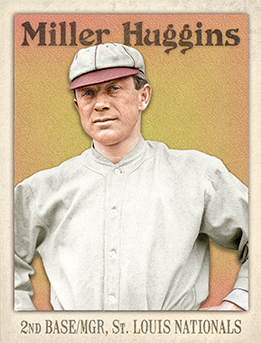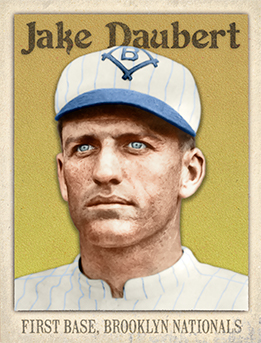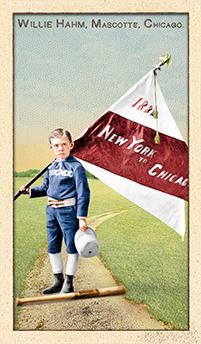
- Series: Beginnings: 1880's
- City: Chicago
- Team: White Stockings
- League: National League
Willie Hahm, also known as “Master Willies,” was a rarity among early baseball mascots. He was white. The youngster, said to have been barely able to talk when first brought to the dugout, was the diminutive talisman for the Chicago White Stockings in the mid-1880s. “The Chicagos have great confidence in him as a promoter of success and make a great fuss over him” said Louisville Colonels manager Jim Hart in one of the earliest interviews explicating the curious role of mascots in America’s game. After triumphing in the 1884 campaign, Hart said the Sox had paraded Hahm at the head of their procession in an open landau. The Chicago Tribune reported on a big match with the rival Wolverines on June 18, 1886. Al Spalding brought a trainload of boosters to Detroit in hopes of preventing the eclipse of Chicago’s record home winning streak. Downtown Motor City was treated to the spectacle of the White Stockings and 200 rabid fans marching from the depot to the Russell Hotel carrying broomsticks with Willie Hahm leading the throng. Later, per the Tribune, “The Chicagos were escorted to the ground by a band, and entered the field behind little Willie Hahm, who carried an immense broom on which were written the words Our Mascot.”
- Many of the early mascots were black kids dragooned by superstitious players such as NY’s Buck Ewing
- The first two releases of this card (2016) were errors: Hahm was misspelled as "Hahn"
- Hahm's uniform color in this card was changed from black to blue in March, 2017 to reflect recent reliable research conducted by Craig Brown and friends at Threads of Our Game. Two cards had been previously released featuring a black uniform.
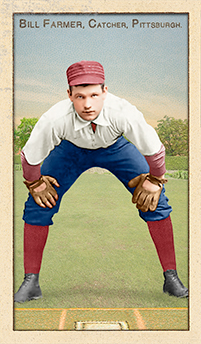
- Series: Beginnings: 1880's
- City: Pittsburgh
- Team: Alleghenys
- League: National League
William Charles Farmer (1864-1928) had a very brief major league career as a catcher for two teams in 1888. He played first for the Pittsburgh Alleghenys of the National League and got into two games with four at bats. He then moved across state to the Philadelphia Athletics of the American Association where he played in three games and got two hits in 12 plate appearances. He drove in one run. Such was the lot of this would-be big leaguer, a “career average” of .125. Bill did better when he moved west to the St. Paul Apostles in 1889. He was behind the plate for 28 of his 63 games and batted .272. He even showed some speed with 38 steals. He was on the team’s roster the following year but performance data is lacking. Similarly, for Farmer’s first minor league assignment in 1887 with the Shamokin Maroons in the Central Pennsylvania League, we know only that he was on the team.
- High Heat Stats has compiled a list of all the Emerald Isle-born players who made it to MLB. Farmer, of Dublin, is one of only 44 on that roll
- The Goodwin editors point out a somewhat mournful stat for Mr. Farmer: he was featured in more Old Judge card poses (5) than he had hits in his major league tenure (2)
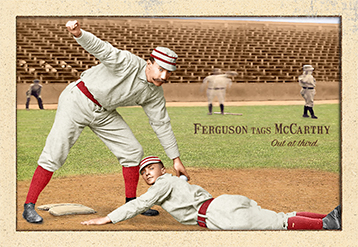
- Series: 1880s: Diamond Duos
- City: Philadelphia
- Team: Quakers
- League: National League
Charlie Ferguson:
Charles J. Ferguson (1863-1888) was considered by future Hall of Famer Wilbert Robinson to be the 5th best player of all-time when Ferguson succumbed to typhoid fever at age 25. Primarily a pitcher for the Quakers over four seasons, the right-hander also handled the outfield and second-base. He won at least 21 games each year and was lights-out in 1886, winning 30 with a 1.98 ERA (2nd in the league). Playing more outfield the next year, Ferguson not only won 22 but drove in 85 with a .327 average. The youngster was stricken before the ’88 season and never recovered.
- Hurled a no-hitter against the Providence Grays on Aug 29, 1885
- In tribute to this young warrior, the Quakers and three other NL teams wore black crepe for the entire 1888 season
- Decades later, W.B. Hanna dubbed him “the game’s best all around player”
- Robinson ranked Ferguson 5th all time after Cobb, Keeler, Ruth and Wagner
Tommy McCarthy:
Thomas Francis Michael McCarthy (1863-1922) failed as a pitcher, but established himself as a fast and intelligent outfielder and base runner over 13 professional seasons. While with the Boston Beaneaters from 1892-1895, he and Hugh Duffy were called the “Heavenly Twins” as they comprised one of the best outfield tandems of the era.
- Had a .292 lifetime average
- Although records are incomplete, he probably stole 500+ bases
- Introduced the Hit & Run play
- Elected to Hall of Fame: 1946
Auction History
Cartophilia
Old Judge Pose: 157-4
- Series: Diamond Heads '15
- City: St. Louis
- Team: Cardinals
- League: National League
- Hall: National Baseball Hall of Fame
Miller James Huggins (1879-1929) played 2B for the Reds and Cards (1904-16), then managed the Cards and Yankees during the latter’s dominant decade, winning 6 AL pennants and 3 World Series. Despite a low-key style, Huggins shook up the NY roster, drawing heavily from the Red Sox and even reined in the mighty Babe, laying the groundwork for Murderers’ Row.
- Presided over consecutive World Series sweeps in 1927 & 28
- Following Huggins’ untimely death at age 50, all AL games were canceled in tribute
- Elected to Hall of Fame: 1964
- Series: Diamond Heads '15
- City: Brooklyn
- Team: Robins
- League: National League
Jacob Ellsworth Daubert (1884-1924) is considered by some the best first-baseman NOT in the Hall. His fielding was never below .989, he led the NL in batting 1913 & ’14, and was MVP in ’13. Seven times from 1911-19 he was named to Baseball Magazine’s All-America team. Popular with players and fans, his union activity alienated management.
- Charles Ebbetts sent him from Brooklyn to the Reds in 1919 following a salary dispute
- Became ill and died during his final road trip with the Reds in 1924



